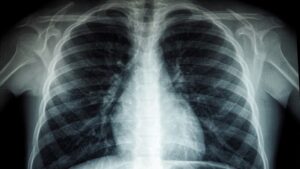[ad_1]
WHAT IS PARAPLEGIA (Spinal Cord Paralysis)?
Paraplegia or spinal cord paralysis can be defined as the loss of muscle strength and sensory functions of the lower extremity. However, it is not only limited to muscle and sensory loss, but also the functions of the person called autonomic functions that work out of their own will are also affected.
In summary, the clinical picture that occurs as a result of damage to the spinal cord due to any reason, such as traumas, diseases of the nerve tissue, tumors, bleeding, exposure to radiation or infections is called spinal cord paralysis.
WHAT ARE THE SYMPTOMS OF PARAPLEGIA (Spinal Cord Paralysis)?
Paraplegia refers to partial or complete loss of any function carried by the spinal cord. The most well-known of them are; It is listed as the partial or complete disappearance of muscle strength, that is, the paralysis of the muscles that cannot be moved, the partial or complete disappearance of sensations such as pain, temperature, touch and position.
There may be weakening or complete loss of reflexes. It can occur in the form of damage to bowel functions, called autonomic functions, and urinary and stool excretion functions. In addition to muscle and sensory functions, there may be an inability to urinate, an inability to make an ablution or make it difficult.
WHAT CAUSES PARAPLEGIA (Spinal Cord Paralysis)?
It is often traumatic. Most frequently, stories such as traffic accidents, falling from a height, diving into shallow water, and gunshot wounds cause paraplegia.
HOW IS PARAPLEGIA TREATED?
If the spinal cord is not completely damaged, is under pressure, or if spinal cord injury is observed due to a fracture in the spine, correction and stabilization of the spinal alignment and fracture will be required first.
After that, it is monitored whether there will be nerve healing with drug treatments and rehabilitation studies are started as soon as possible.
Paraplegia rehabilitation is an extremely complicated process. The level of injury to the person is determined by the degree of injury to maintainable muscle strength, state and level of sensation, and urinary and fecal excretion. However, in patients whose lower side muscle function is partially preserved, it is evaluated beforehand whether the “rehabilitation studies” will allow walking without using any device or assistive device.
With neurological rehabilitation studies, both muscle functions and autonomic functions are rehabilitated. If the level of injury is in the lower lumbar regions (as more muscles will be protected), it may be possible for the person to walk with orthoses, walking devices, canadians and walking sticks.
It may be possible to walk with long-leg walking devices if the leg and hip muscles are affected in injuries in the upper segments. However, active muscle movement and walking may not be possible at all in the upper segments and in cases where there is complete rupture or crushing, and mobilization using a wheelchair may be required. However, paraplegia rehabilitation is not just a straight line. It is a situation that can be decided after the current situation of the patient is evaluated in detail.
Follow NTV on social media
[ad_2]
Source link






